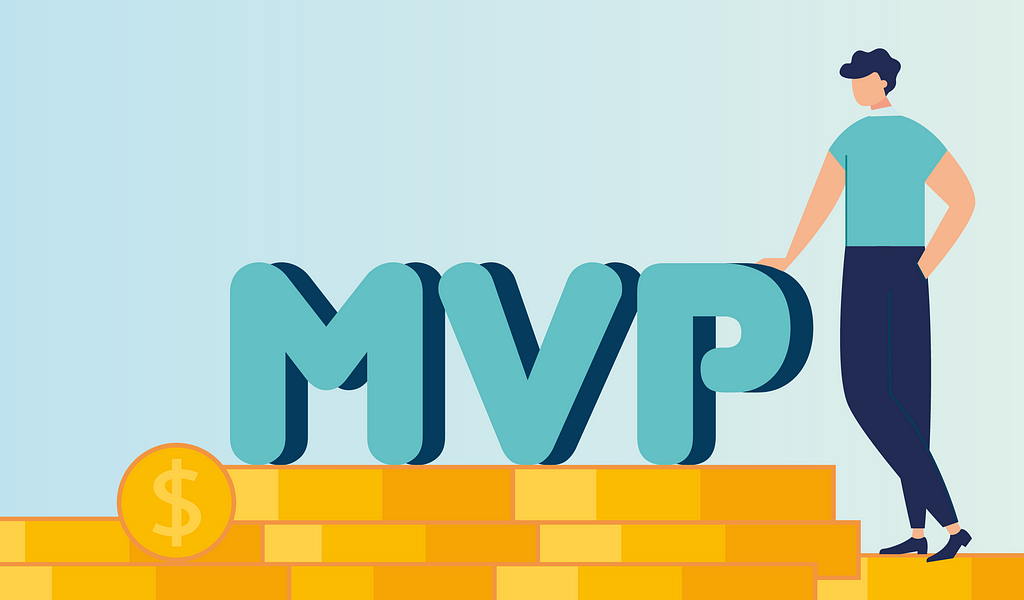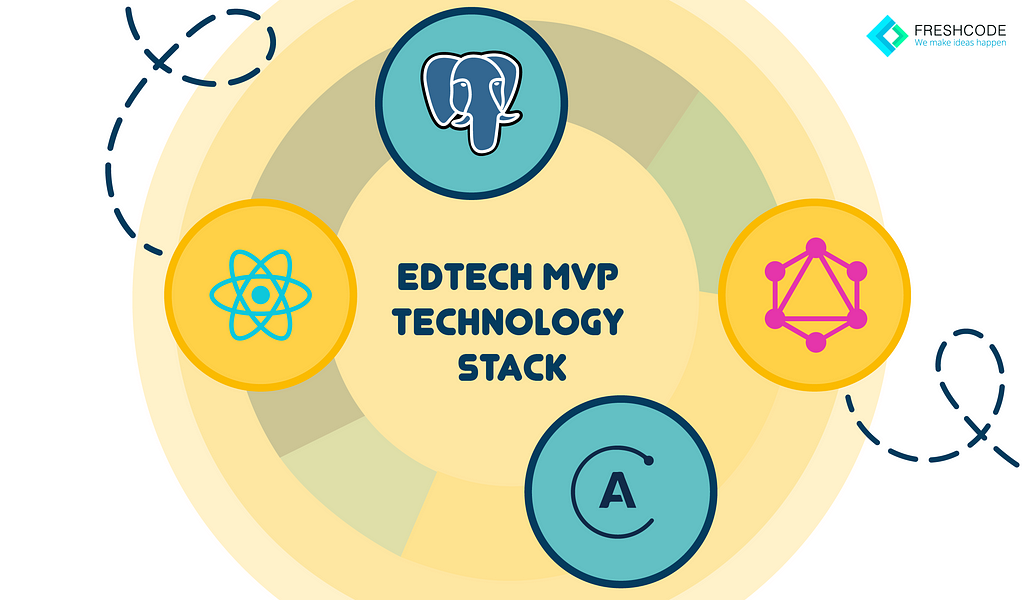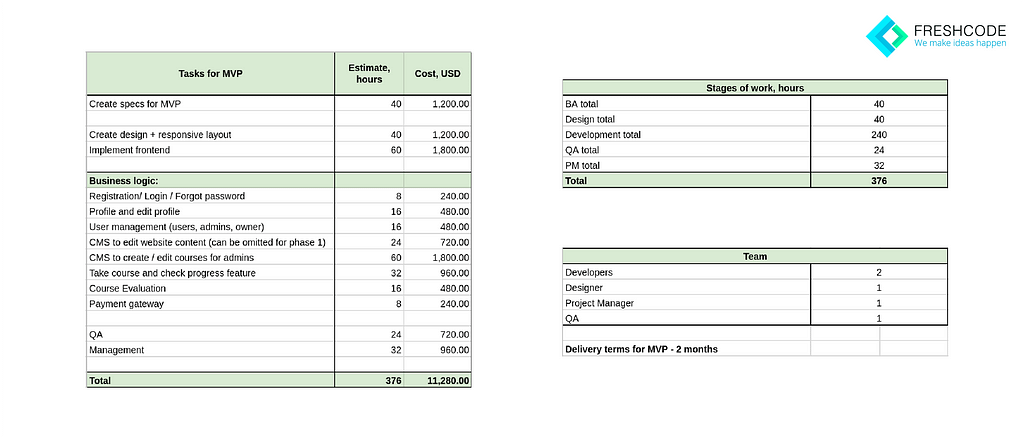Latest news about Bitcoin and all cryptocurrencies. Your daily crypto news habit.

Most EdTech startup CEOs possess an in-depth understanding of the trends in educational technology through years of professional experience, but they lack the technical know-how necessary for IT development. Most non-technical founders don’t have the funding to hire a professional CTO, and the few might be lucky enough to have friends interested in starting a business and providing technical advice and support.
Still, CEOs outsourcing custom eLearning development should be familiar with the process to prevent excessive expenses and time loss. Investors willing to better understand the perspectives of an EdTech startup business plan before investing should also see the big picture.
Considering the relevance of these issues, we have developed this comprehensive guide for an EdTech MVP development for non-technical founders and everyone interested in creating an educational product.
What Is A Minimum Viable Product And Does Your Startup Need It?
Minimum viable product (MVP) is the version of the product with a limited number of features that can be implemented and launched with minimal app development cost and within the tightest timeframe. MVP is a critical idea validation tool for all industries, including custom eLearning solutions. If you are wondering how to create a startup, MVP implementation should be on your agenda.
The main mistake many startups make is assuming that MVP is a prototype or a mockup. In fact, an MVP is a finished product, project, or business ready for launch and marketing. Due to its reduced functionality, MVP does not require substantial investments.
The vital opportunity granted by an MVP is the possibility to gather actionable feedback. The target audience can help validate the project’s relevance and demand. First adopters help identify critical shortcomings and features in need of upgrading or replacement.
For more useful insights on developing an MVP product and its role in every startup life cycle, see our previous article about what is MVP and why every startup needs it.
How To Develop An App? MVP Development Checklist
The minute details of e-learning app development might differ from project to project, however, the main stages are the same. To implement the minimum viable product, agile approach is best suited:
- Generate a detailed mind map containing critical features that define the product’s market value and embody the business founder’s vision.
- Develop a system requirements specification (SRS) to describe the product’s primary features. Learn more about writing an EdTech SRS and get our sample in our article How to create SRS for EdTech application.
- In case the SRS and mind map have already been developed for the final product, identify primary product features and formulate an MVP requirement list.
- Hire an MVP development team.
- Decide on a technology stack for an MVP development with hired team.
- Create a step-by-step MVP development plan in cooperation with the development team.
The plan should include deadlines for the main periods, including:
- UI/UX design
- Code writing
- Testing
- Deploy and launch
7. Test the product’s features on desktop computers and mobile devices.
After the MVP is ready, it is vital to check that it is SRS-compliant before inviting target audience for beta-testing. In case the audience gets the non-SRS-compliant product, the founder cannot assess the project’s feasibility.
How To Create E-Learning Website MVP Similar To Udemy Or Coursera
With the above-mentioned minimum viable product examples, you can develop an MVP for any project, including an EdTech product. Now let’s delve into the specifics of a minimum viable product template for a project similar to Udemy or Coursera.
Mind Map And SRS Development
At the onset of the project, create a mind map with all critical features. For a Coursera or Udemy clone, the array of typical e-learning platform features includes:
- Homepage with a list of the most popular courses, sign up and login form.
- Homepage filters to select the courses by different parameters, i.e., subject.
- Registration and login window.
- Course generation features, including content upload, feedback , and price setting systems.
- Saving courses to favorites.
- Payment system.
- Communication channels to let users contact administrators.
- Adaptive design suitable for mobile devices.
- Admin panel for the project’s founders to manage user and course data.
This list includes the minimum set of features necessary for a Coursera-like MVP. Using it as a reference, group the elements according to their category (i.e., primary and utility features, customer management).
Next, you need to develop an SRS based on the functions of educational technology included in the mind map. The more details on each feature you add, the better the development team will understand their purpose. We will not go into fine details on a precise description of each of the features here. However, if you are interested in learning more about turning a mind map into an SRS, let us know in the comments below, and we will share our insights on how to describe the project’s functionality for the eLearning development team in future articles.
Assembling A Software Development Team
In case you don’t possess technical skills and don’t have friends among the IT crowd, you will need to assemble the team from the ground up. We recommend choosing education software development companies instead of freelance developers as they employ a variety of specialists with a wide range of expertise and can perform all necessary development steps from e-learning design to testing and launch. Working with an established team, you will save time and money, as freelance educational app developers’ rates are usually higher.
For an EdTech project, look for companies with experience of successful educational products. Look through testimonials and the portfolio of case studies to evaluate the team’s expertise with EdTech. List other requirements and prioritize them before researching possible vendors and interviewing the few that get on your short list. Learn more about choosing a perfect outsourcing eLearning development company.
Technology Stack Selection
The team you select will help select the optimal technological stack for your project. Most educational app development companies provide a Tech Lead to guide the project. Tech Lead is an experienced developer with an in-depth understanding of the current IT trends and the future education technology, so he or she will help you identify the toolkit ideally suited for your project.
FreshCode Tech Lead would advise using these technologies if you wanted to create a Udemy or Coursera-like product:
- Front end: react.js / apollo / mobile — react native / connection — graphql
- Back end: postgres
These technologies are preferable as they:
- Possess great perspectives;
- Are open-source, therefore, cheap;
- Ensure high-performance;
- Are reliable and adaptable.
Step-by-Step MVP Development Plan Creation
Having chosen the technology stack for the EdTech project, cooperate with the IT team to create the educational mobile app development schedule. FreshCode experts offer a rough EdTech MVP estimate and cost:
To avoid crucial errors at the project estimation stage, use our guidelines — Project estimation: How do you know that it’s correct.
MVP Testing Before Launch
After the development is finished, test the product personally to ensure its feature set is in working order. With a project like Udemy or Coursera, follow the user flow from registration to buying and creating the course on the desktop and mobile devices. To locate any problems, use all popular browsers, including Chrome, Opera, Safari, and Firefox.
A Few Words On Project Management For Founders
Non-technical founders require basic project management skills to supervise an MVP development process. The primary steps of any IT project management job include:
- Requirements elicitation. Interview the stakeholders to identify critical features and requirements that make the product viable.
- SRS development. Document stakeholders’ requirements and quantifiable deliverables, supplying features for every user needs and test cases for all functions.
- Project estimation. Evaluate the optimistic and the pessimistic timelines for every development stage and calculate the budget.
- Scope reduction. Eliminate non-critical features if the project does not meet your timeline or budget limitations and estimate them anew.
- Development planning. Divide major stages into separate tasks and appoint specialists to perform them.
- Risk management. Develop a risk matrix using the findings of the premortem analysis and address the issues that are most likely to cause severe problems.
- Project execution. Evaluate the educational app development progress daily and introduce corrections when necessary, adding entries to the risk registry.
If you want to learn more, check out our article on how to manage your project step-by-step.
Ready To Develop Your EdTech MVP?
If you have a great idea and want to see it implemented, contact us to develop a viable MVP. Also, if you’re still assessing your options, check out our recent blog articles and sign up for updates to be the first to get the fresh batch of IT insights. Share this guide on social media and let us know in the comments whether you would be interested in learning more about promoting EdTech projects through free and premium tools.
Original article How to create MVP, guide for non-technical specialists published at freshcodeit.com.
How to create MVP, guide for non-technical specialists. was originally published in Hacker Noon on Medium, where people are continuing the conversation by highlighting and responding to this story.
Disclaimer
The views and opinions expressed in this article are solely those of the authors and do not reflect the views of Bitcoin Insider. Every investment and trading move involves risk - this is especially true for cryptocurrencies given their volatility. We strongly advise our readers to conduct their own research when making a decision.



